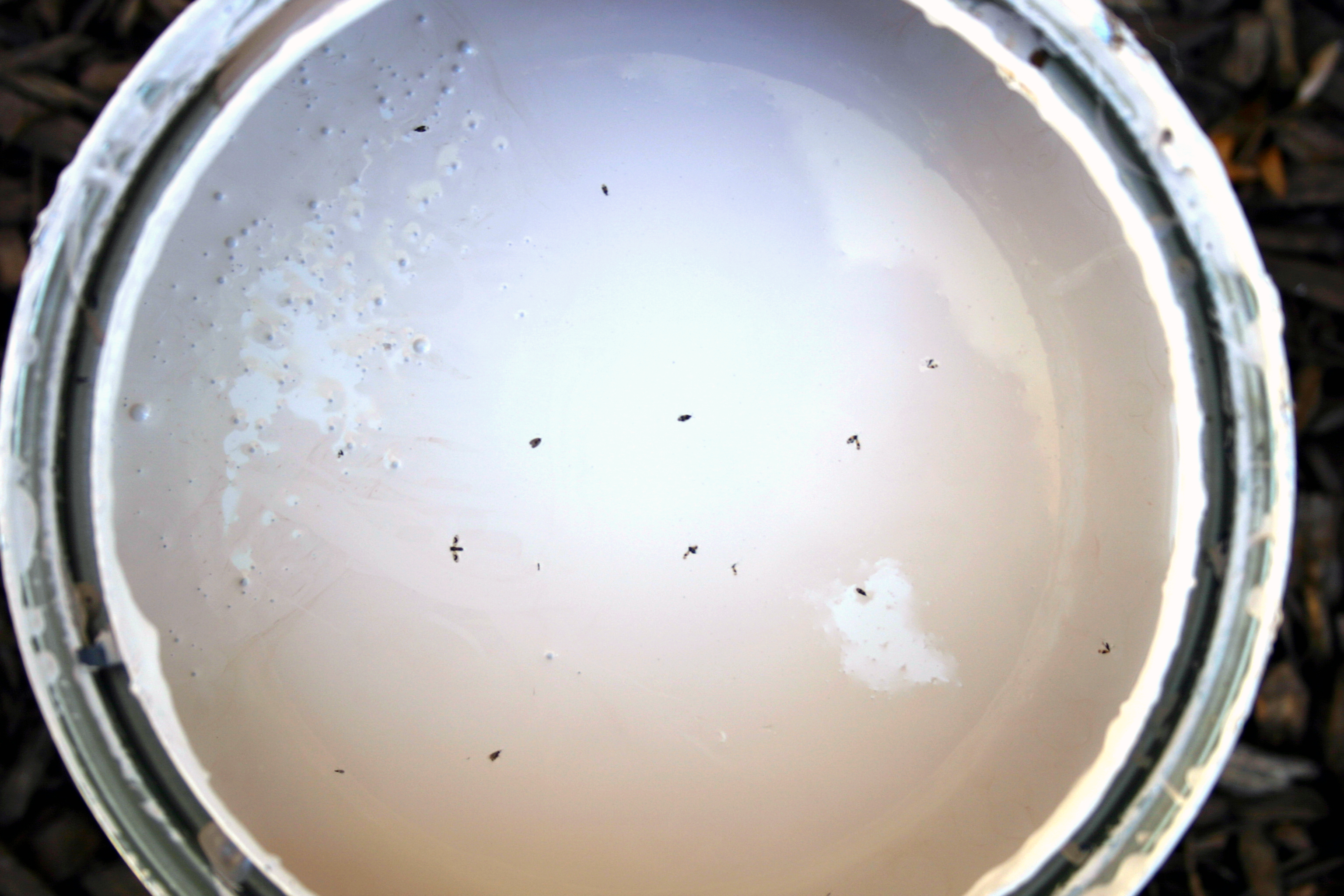–Dr. Bob Bauernfeind
Saturday afternoon as I was doing some house painting, I was feeling occasional “little irritations” on my arms and legs. Looking at the points of discomfort, I recognized my little visitors: minute pirate bugs – Orius spp. And, looking in my paint bucket, more were “stuck” on the surface of the paint.
Actually, this was nothing that I hadn’t experienced in the past. I usually have a spring and summer list of projects. I seem to put painting (not my chore of choice) off until the heat-of-summer is past, and then gallop to complete the task trying to beat colder weather. Thus, mid- to late fall is when I am visited by MPB. What draws them? It’s not the paint color. Whether ultra-bright white (for trim), or Coronado Tint Base 410-35 + B20C24F9 (a color for which there is no name) for the body of the house, they show up. I surmise that the attractant is the paint odor being carried in the air.
Those that land on me take-a-taste. This is not an unusual. One way an insect determines whether it has landed on a “choice” food source is to take-a-taste. While an insect with chewing mouthparts takes-a-bite/chomp, an insect with piercing/sucking mouthparts (such as a MPB) takes a “jab-and-sip”. They must not get an instant result, because I have watched individuals lingering after their jab caught my attention. But eventually, because I didn’t qualify as a satisfactory food source, they withdrew. The fate of those in the paint bucket? Given their small size, they are painted into and become a part of the coat of paint on my house.
Are MPBs pests or not-a-pest? While their bite (in my estimation) is but a minor irritation, in their proper place, MPB’s would be considered to be beneficial insects in their role as predators. Close-up, they are distinctively marked.
Given their small size (1 – 1 ½ mm), their natural prey are correspondingly small —- preferably insect eggs, mites, scale crawlers, thrips, aphids, small stage caterpillars. Using their styet-like mouthparts, they impale their prey and withdraw the body fluids. They then abandon the spent carcass and search for their next victim.
MPBs mostly go unseen due to their small size. Yet, they are common and can be found on flowering shrubs and weeds where they subsist on plant juices in the absence of prey. However, in the presence of arthropod hosts, their true feeding preferences take over. Both nymphs and adults have been cited to consume 30 or more spider mites per day. And often times, adult MPBs are drawn to corn silks where they feed on/destroy eggs deposited by corn earworm moths. MPBs are commercially available and can be useful when released in enclosed facilities such as greenhouses. But for home gardeners, purchase-and-release tactics are impractical because released MPBs would likely take wing. Rather, rely on their natural abundance to allow them (on their own) to find their way into home landscapes and gardens.


